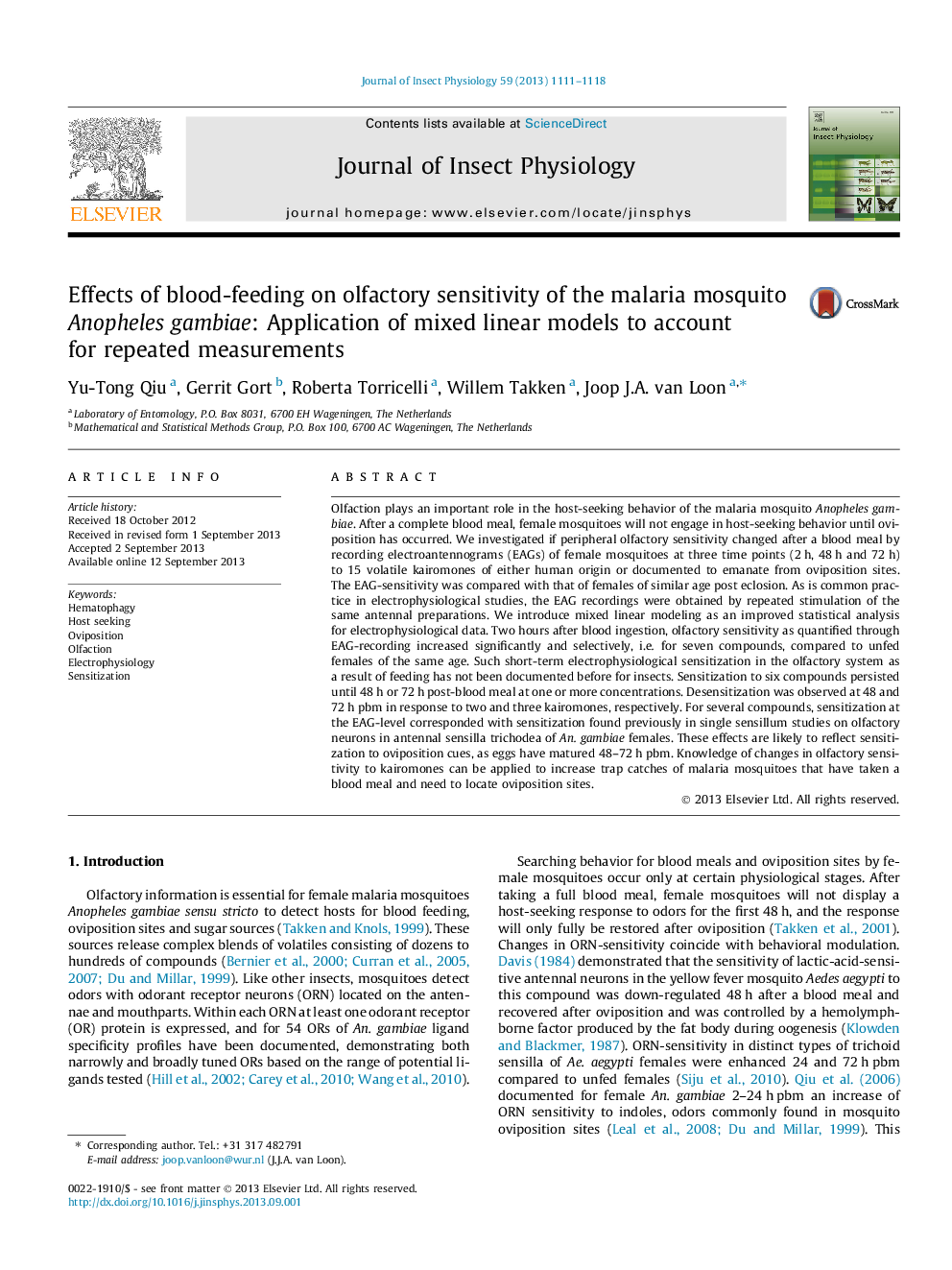| کد مقاله | کد نشریه | سال انتشار | مقاله انگلیسی | نسخه تمام متن |
|---|---|---|---|---|
| 2840475 | 1165324 | 2013 | 8 صفحه PDF | دانلود رایگان |

• Olfactory sensitivity changed after female malaria mosquitoes ingested a blood meal.
• First study to demonstrate electrophysiological sensitization after 2 h of feeding in an insect.
• Sensitization was found to cues emanating from mosquito oviposition sites.
• Mixed linear modeling is an improved statistical analysis for electrophysiological data.
Olfaction plays an important role in the host-seeking behavior of the malaria mosquito Anopheles gambiae. After a complete blood meal, female mosquitoes will not engage in host-seeking behavior until oviposition has occurred. We investigated if peripheral olfactory sensitivity changed after a blood meal by recording electroantennograms (EAGs) of female mosquitoes at three time points (2 h, 48 h and 72 h) to 15 volatile kairomones of either human origin or documented to emanate from oviposition sites. The EAG-sensitivity was compared with that of females of similar age post eclosion. As is common practice in electrophysiological studies, the EAG recordings were obtained by repeated stimulation of the same antennal preparations. We introduce mixed linear modeling as an improved statistical analysis for electrophysiological data. Two hours after blood ingestion, olfactory sensitivity as quantified through EAG-recording increased significantly and selectively, i.e. for seven compounds, compared to unfed females of the same age. Such short-term electrophysiological sensitization in the olfactory system as a result of feeding has not been documented before for insects. Sensitization to six compounds persisted until 48 h or 72 h post-blood meal at one or more concentrations. Desensitization was observed at 48 and 72 h pbm in response to two and three kairomones, respectively. For several compounds, sensitization at the EAG-level corresponded with sensitization found previously in single sensillum studies on olfactory neurons in antennal sensilla trichodea of An. gambiae females. These effects are likely to reflect sensitization to oviposition cues, as eggs have matured 48–72 h pbm. Knowledge of changes in olfactory sensitivity to kairomones can be applied to increase trap catches of malaria mosquitoes that have taken a blood meal and need to locate oviposition sites.
Figure optionsDownload as PowerPoint slide
Journal: Journal of Insect Physiology - Volume 59, Issue 11, November 2013, Pages 1111–1118